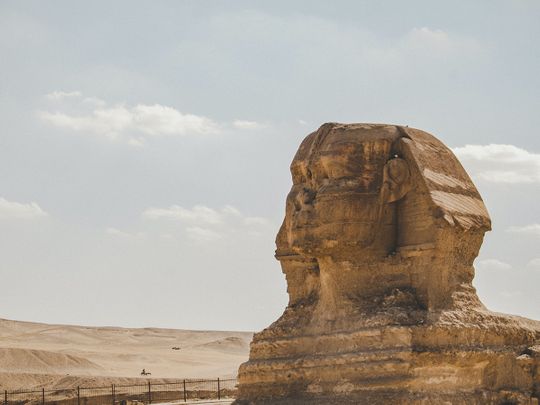
Running late for an exam at school. Falling from a great height. Being chased by a shadowy creature. Teeth falling out. Many of us have the same kind of nightmares, but 4,000 years ago, things were a little different.
Click start to play today’s Spell It, where we ‘warily’ tread into the world of nightmares.
According to an August 2023 report in the National Geographic, the earliest references to dreams were found in approximately 20 ‘Letters to the Dead’, in ancient Egypt. These letters were written on papyrus or pottery and left in the tombs of dead relatives. It was common practice for the living to write to the departed – their letters often included requests for favours, like help in ending a property dispute or wishes for the healthy birth of a child. Sometimes, people would leave inscribed bowls, full of tasty treats, as an incentive for the dead to fulfill their requests.
One such Letter to the Dead describes the first recording of an ancient Egyptian nightmare. In around 2,100BC, a man named Heni wrote to his deceased father, asking him for help with his nightmare. He described how, in his dreams, his father’s servant – a man named Seni – would keep staring at him. Heni alluded to how he mistreated Seni, in his letter, which historians think may have been a confession to relieve his guilty conscience. But Heni also went on to claim he was not the first to abuse Seni, and begged his father with the words: “Do not allow him to do me harm.”
The 4,000-year-old reference to a nightmare gave historians an insight into how ancient Egypt viewed the realm of dreams. They placed great value on dreaming, and considered it a way to access a world that’s hidden from view. In fact, the ancient Egyptian word for dream was the noun ‘resut’, which actually means ‘awakening’. They didn’t have a verb for dreaming; it was a passive event – something to be observed and reflected upon.
Today, dreams are thought to give insight into a person’s psyche, but for ancient Egyptians, they provided omens about their present and future.
It’s why pharaohs used dreams liberally, as a way to legitimise their sovereign and gain popularity. One of the most famous royal dreams comes from the late 15th century BC. A young prince, Thutmose, was hunting close to the Great Sphinx, which had been constructed over 1,000 years before he was born, and was lost under the shifting desert sands. Unaware that he was so close to the ancient structure, Thutmose sat down to rest, and fell asleep.
He then dreamt of the deity Re-Horakhty, who told the young man to clear the sands from the Sphinx. He promised him that if he did so, he would become the next pharaoh. When Thutmose awakened, he saw through his end of the deal, and the prophecy was fulfilled.
Thutmose IV commemorated this incident, and his rise to power, by having his dream engraved on a stela, which is now known as the Dream Stela. He placed it between the Sphinx’s paws. Historians today still are not quite sure how Thutmose came to power, but it appears his fateful dream may have helped him secure his right to the throne.
What do you think of dreams and nightmares in ancient Egypt? Play today’s Spell It and let us know at games@gulfnews.com.








